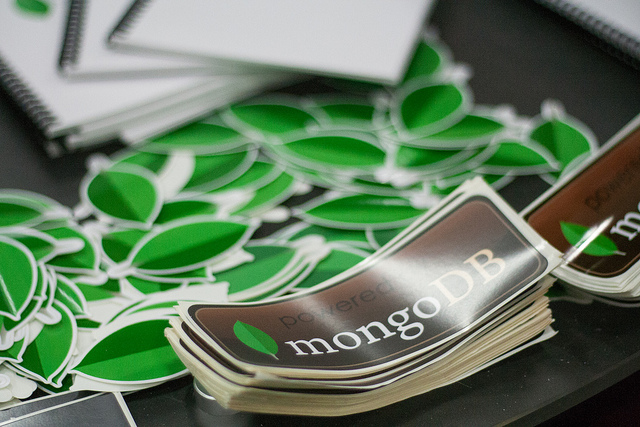Cloud Stocks: MongoDB Has Huge Room To Grow In $97B Market

Database-as-a-Service (DBaaS) provider MongoDB (Nasdaq: MDB) recently reported its fourth-quarter results that surpassed market expectations. MongoDB continues to rely on an expanding partner network and product upgrades to drive market growth.
MongoDB’s Financials
MongoDB’s revenues for the fourth quarter grew 38% to $171 million, ahead of the market’s forecast of $157 million. Adjusted loss of $0.33 per share was also ahead of the Street’s forecast of a loss of $0.39 per share.
By segment, Subscription revenues grew 39% to $163.9 million, and services revenues grew 24% to $7.1 million.
For the fiscal year, MongoDB’s revenues grew 40% to $590.4 million and loss was $0.99 per share.
For the first quarter, MongoDB expects revenues of $167-$170 million with a net loss of $0.39-$0.36 per share. It expects to end the year with revenues of $745-$765 million and a net loss of $1.55-$1.39 per share. The market was looking for revenues of $165.71 million for the quarter with a net loss of $0.33 per share and revenues of $732.87 million and a net loss of $1.13 per share for the year.
MongoDB’s Growing Partner Base
Recently, MongoDB announced the expansion of its partnership with Google Cloud. The partnership will extend their previous go-to-market relationship as well as provide a deeper integration of Google Cloud’s products with its own global cloud database. Developers will also be able to integrate Atlas with Google Cloud products. Mainframe modernization solutions from Google Cloud will now be able to support MongoDB Atlas and help customers convert legacy COBOL code on mainframes into modern Java-based apps built on MongoDB.
Besides Google, MongoDB also announced its partnership with Tencent Cloud. As part of the tie-up, customers will now be able to adopt and use MongoDB-as-a-Service across Tencent’s cloud infrastructure.
Additionally, MongoDB announced the general availability of MongoDB Realm Sync, its service that syncs data between the Realm mobile database and MongoDB Atlas. The solution allows organizations to rapidly build responsive applications and help remote workforces drive user adoption, improve productivity, and deliver improved ROI. The solution allows teams to take advantage of the bidirectional data sync between devices and MongoDB Atlas without the need to write conflict resolution and networking code. End users will have the ability to read and write data to their devices, thus resulting in zero-latency data retrieval as well as offline application functionality.
MongoDB has been a DBaaS force to reckon with. Its non-relational, document database Atlas allows developers to quickly store large amounts of unstructured data, improving operational efficiency and database performance and enabling enterprises to launch applications more quickly. Microsoft and Oracle have both tried to copy MongoDB’s non-relational document model for their databases. I had even recommended that Oracle should acquire MongoDB. Developers remain loyal to MongoDB, and Oracle’s attempts to grow in the market have not borne good results.
According to a DB Engines popularity ranking, MongoDB is the fifth most popular database behind Oracle, MySQL, Microsoft SQL Server, and Postgre SQL. Although it is fifth, it is the only document database on the list. Database customers are typically very sticky customers, and for MongoDB to attract a following of this magnitude against rivals like Oracle and Microsoft is a tremendous feat.
MongoDB’s management rightly believes that there is still significant room to grow. It estimates that it has a $97 billion market opportunity by 2023. With $720 million annual revenues forecast for the current year, there clearly is a lot of room for growth. Its continued partnerships and product upgrades will help it make bigger inroads into this space.
Its stock is currently trading at $301.34 with a market capitalization of $18.16 billion. It touched a 52-week high of $428.96 in February. It was trading at a 52-week low of $96 in March last year.
Disclosure: All investors should make their own assessments based on their own research, informed interpretations and risk appetite. This article expresses my own opinions based on my own ...
more


